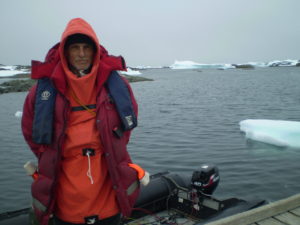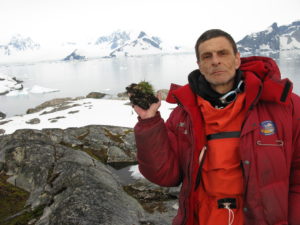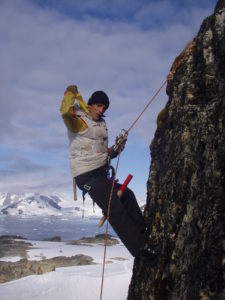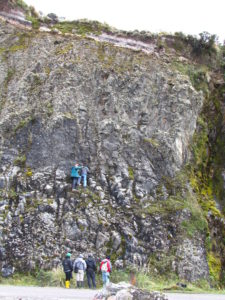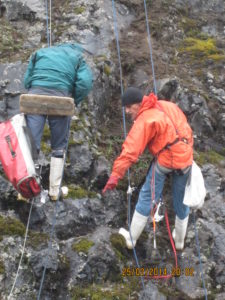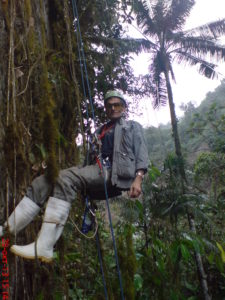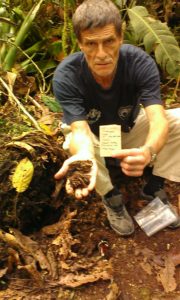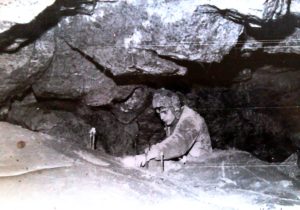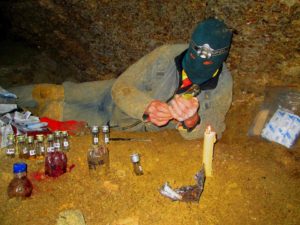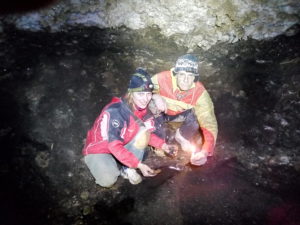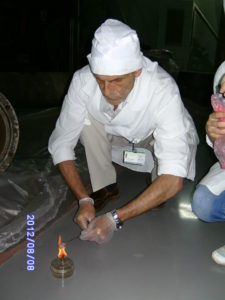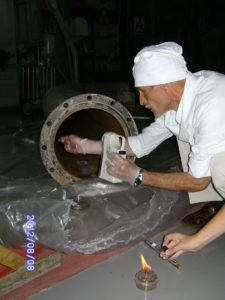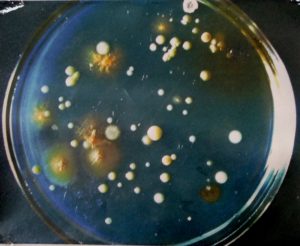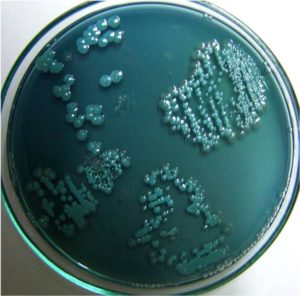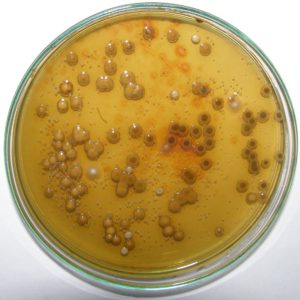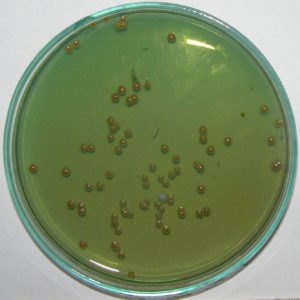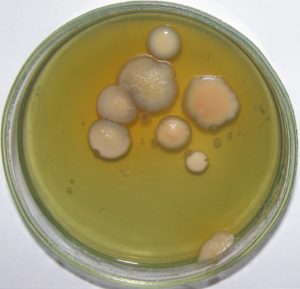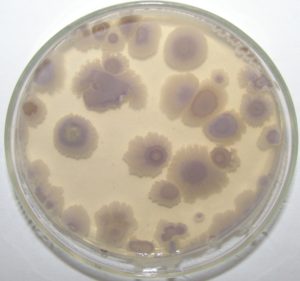Department of Extremophilic Microorganism Biology, Zabolotny Institute of Microbiology and Virology
A visit to Dr. Oleksandr Tashyrev’s office at the Zabolotny Institute of Microbiology and Virology of the National Academy of Sciences in Kyiv is like a trip around the world. The walls are covered with photographs, flags, and other mementos from his many trips to Asia, South America and even Antarctica. His laboratory seems straight out of a Jules Verne novel. Yet the work Dr. Tashyrev and his associates are performing there with largely antiquated and restored equipment has broad applications for a topic on many people's minds these days - the environment.
Dr. Tashyrev is the head of the Department of Extremophilic Microorganism Biology (an extremophile is an organism that thrives in physically or geo-chemically extreme conditions inhospitable to most life on Earth).
The institute’s scientists study extremophilic bacteria found in natural and man-made environments for resistance to extreme environmental factors (γ-radiation, UV-lights, toxic metals, low temperatures, etc.) and their potential biotechnological properties. These locations have included Western Antarctica (primitive soils, freshwater lakes, rock cliffs, etc.), the Negev Desert, rock cliffs at the Dead Sea (Israel), karst caves (Ukraine), hypersaline lakes (Bulgaria), Black Sea sediments, as well as in nuclear reactors (Institute of Nuclear Research, Kyiv), and buildings and soil in or round the Chornobyl Nuclear Power Station and the exclusion zone.
The Department has two research areas (multi landscape and rock cliff) at Galindez Island in Antarctica, where its staff study unique properties of microorganisms and their role in bio-geochemical cycles.
A separate direction of the department's work focuses on bioprospecting - targeted searches in extreme ecosystems for microorganisms possessing biotechnological properties. Over the past ten years co-workers have developed a collection of extremophilic microorganisms (bacteria and yeast) with unique properties. It includes microorganisms resistant to 100-63,546 ppm of copper, chromium, cadmium, nickel and mercury ions, and UV-resistant yeast that are hyper producers of melanin and carotenes (10-12% from total cell mass), etc. Their collection is constantly being updated.
In 2008-2011 the Department participated in the CAREX Project (part of the European Coordination Action for Research Activities on Life in Extreme Environments (LEXEN). LEXEN is an emerging area of research. The science has enormous relevance for our knowledge of the diversity and environmental limits of life on this planet as well as of the novel strategies employed by life forms to survive and reproduce at these limits. Products obtained from organisms in extreme environments have substantial potential for use in industrial processes.

Dr. Tashyrev’s lab has developed universal environmental and bioenergetic microbial technologies that provide environment protection, purification of contaminated ecosystems from toxic compounds, and the obtaining of valuable products such as gaseous energy carriers (hydrogen or methane), solid fuel (lignocellulosic residues), biofertilizers, metal concentrates and ecologically pure water.

Using thermodynamic prognosis, they have developed novel universal environmental, bioenergetic and bioremediational biotechnologies based on a universal granular microbial preparation (Microbial Pellets), with the following applications:
Treatment of multicomponent organic waste (MCOW) via anaerobic fermentation leading to an 80 to 120 fold decrease in their weight and volume in a short time (5 to 7 days) as well as extracting a wide range of valuable products:
– Gaseous energy carriers – molecular hydrogen (H2) and methane (CH4). The yield of hydrogen – 80000 to120000 L / 1 ton of MCOW, and methane is 40000...70000 L / 1 ton of MCOW.
– Solid fuel – lignocellulose (dry non-digested residues of MCOW). The output is 50 to 60 kg / 1 ton of MCOW.
– Biofertilizers (fermented residues of MCOW) – 0.5 to 0.6 kg / 100 kg of MCOW.
The biotechnology for treatment of organic waste is effective even in extreme conditions as revealed when it was implemented at the Akademik Vernadsky Antarctic research base.
Purification of toxic wastewater (filtrate) from soluble organic compounds of MCOW in high concentration range (10000 to 20000 mg/L for total Carbon). The efficiency of purification shows a 500 times decrease in the concentration of organics (from 10000 to 20 mg/L) as well as obtaining of pure water and energy – methane (via anaerobic fermentation of organics) – 0.5 to1.0 L of CH4 / L of sewage.
Purification of sewage from a wide range of toxic metals (Hg2+, CrO42-, Cu2+, Cd2+, Ni2+, Co2+ etc.) at any concentration of metals as well as any combination and ratio of these metals.
Purification of liquid radioactive waste from a wide range of radionuclides (137Cs, 226Ra, 238U, 90Sr, 186Ra etc.) followed by the developed technology of safe combustion of used dried radioactive granules. Ash concentrate contains no water and is suitable for unlimited term storage.
Combined biotechnologies provide simultaneous achievement of several environmental and bioenergetic effects. These are the destruction of solid organic waste, energy carriers synthesis and purification of wastewater from metals; the obtaining of pure water and metal concentrate; and the obtaining of technical abrasive (crystalline Cr2O3) purifying galvanic sewage for closed industrial cycles of water supply.
Bioremediation of natural ecosystems. The accelerated treatment of organic compounds of household waste dumps while deriving methane. The purification of water reservoirs and soils from a wide range of toxic metals and radionuclides.

Dr. Tashyrev is looking to take his science out of the lab and apply it to the real world. If you're interested in the solutions they've developed, contact him at
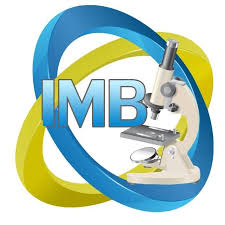 Zabolotny Institute of Microbiology and Virology
Zabolotny Institute of Microbiology and Virology
(Top photo, left to right: Dr. Oleksandr Tashyrev; Vira Govorukha, Research Fellow, Zabolotny Institute of Microbiology and Virology; Olesia Havryliuk, Leading Engineer, Zabolotny Institute of Microbiology and Virology; Markian Bilynskyj, Vice President, US-Ukraine Foundation)
Watch their videos on YouTube (tash2232):
Thermodynamic prediction for novel biotechnologies
Hydrogen fermentation for destruction of organic waste
Read more about their “microbial biocatalyst"


